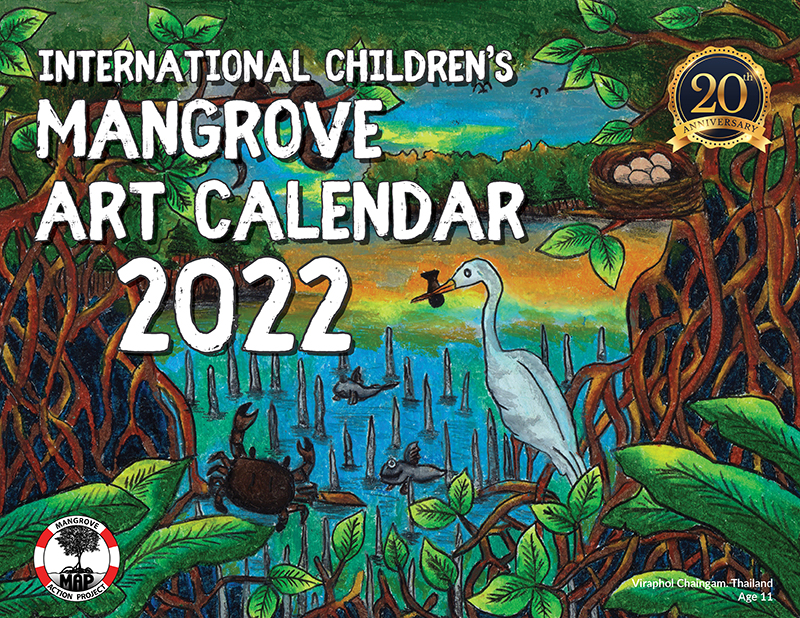MAP News Issue 551 – July 30, 2022
The MAP News | |
FEATURED STORY Rare freshwater mangroves discovered 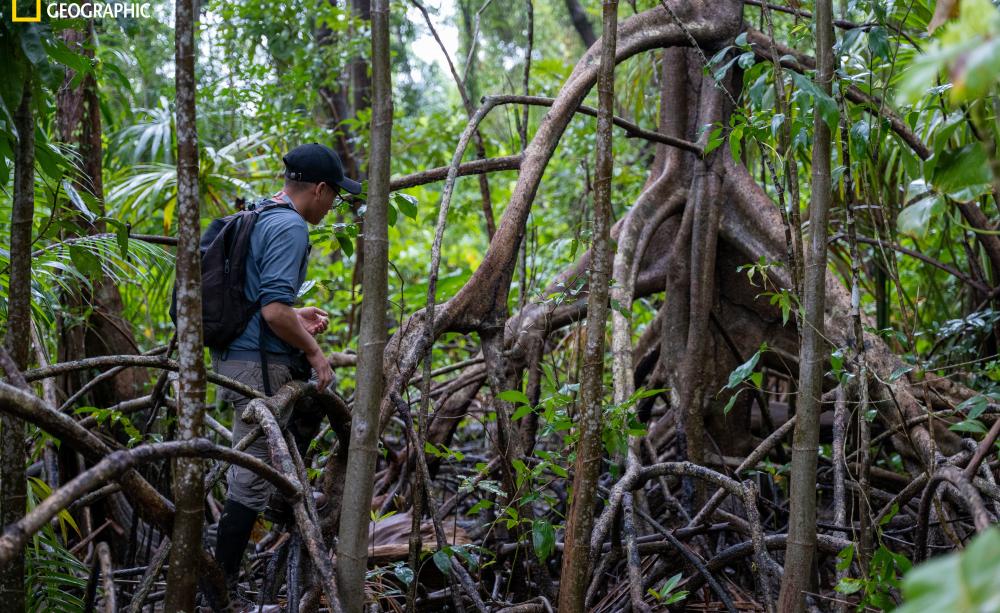 BRAZIL – Freshwater mangroves have been discovered in the Amazon Delta for the first time – suggesting ecosystem adaptability to the river flow. This study is the first scientific finding published as part of the National Geographic and Rolex Perpetual Planet Amazon Expedition, a two-year exploration of the Amazon River Basin from the Andes to the Atlantic. Angelo Bernardino and Thiago Silva, both National Geographic Explorers, conducted the first exploration of 11 mangrove forests along the Amazon Delta in April this year (2022). The Explorers analyzed data from the soil pore water, salinity, composition and tree density and volume using 3-D laser scanning from the ground and from drones. Their findings have been published in the journal, Current Biology. Bernardino, a marine ecologist, told The Ecologist: “It was fascinating. At first, I was confused because we were not seeing the same forests we are used to seeing all over Brazil. In the Amazon Delta, the forests have this unique mixture of freshwater plants. READ MORE GLOBAL CONTEST CLOSES – MANGROVE PHOTO CONTEST RECEIVES RECORD NUMBER OF ENTRIES  Check out our biggest mangrove photo gallery with over 2200 submissions from 68 countries! CLICK HERE Global Awareness Critical to Protect World’s Mangroves  LIBERIA – Time is running out to protect the world’s mangroves which are not only home to many species but also an important hedge against climate impacts, the head of the UN Educational, Scientific and Cultural Organization (UNESCO) said recenty. Audrey Azoulay, the UNESCO Director-General, called for greater global awareness about these critical coastal areas in her message to mark the International Day for the Conservation of the Mangrove Ecosystem. It is estimated that more than three quarters of mangroves in the world are now threatened, “and with them all the fine balances that depend on them”, she said. Ms. Azoulay announced that next month, UNESCO will launch a new mangrove restoration project in seven Latin American countries: Colombia, Cuba, Ecuador, El Salvador, Mexico, Panama, and Peru. The project will bring economic opportunities to local communities. It will also facilitate the exchange and sharing of knowledge between local and indigenous populations and the scientific community. “Beyond protection and restoration, we need global awareness. This requires educating and alerting the public, not only in schools, but wherever possible,” she said. READ MORE AMERICAS Cayman Island Art Sale On Today  CAYMAN ISLANDS – The Mangrove Rangers will be at Parcel 110 this Saturday 10am-4pm for our second annual Mangrove Art Festival! Refreshments, activities and art on display all day, fun for the whole family! We will have activities and games all day with a DIY mangrove costume contest and fashion show at 2:30pm, judged by Miss Cayman Universe! Social mixer and happy hour will start at 3pm and go until the event closes at 4pm. We hope to see you there!. READ MORE Crabbers face danger and poverty to save Ecuador’s mangroves 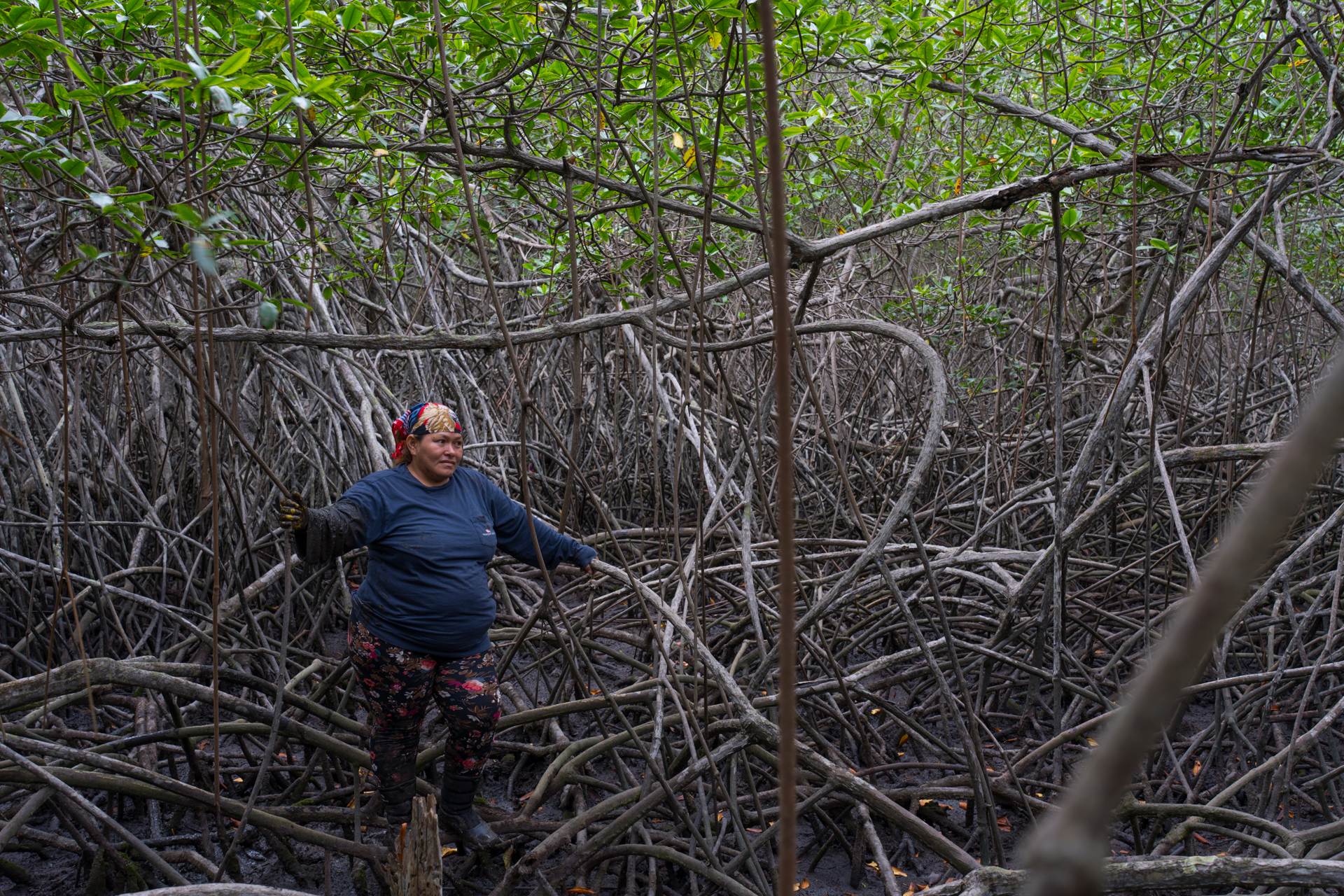 ECUADOR – The small motorboat left the dock at the end of Neiva Carrascal’s street and hummed out into the ocean off the southern coast of Ecuador, keeping close to the shore lined with tangled branches of mangroves. Every day, Carrascal and 80 others from her port community in the city of Machala go out to collect the crabs that burrow in the mud among the mangrove roots, a job her family has been doing for generations as crabbers, or cangrejeros. On a recent trip out, another group of crabbers warned Carrascal’s group about new markings they had spotted on trees farther north, an indication that shrimp farmers were planning to illegally cut down mangroves to expand their shrimping pools. Shrimp farmers often encroach on crab catching areas and go to extreme lengths to keep crabbers away, from hiring armed guards to training dogs to swim out and attack oncoming boats, she said. “Not long ago, I was with my husband and other companions and we had to climb up on some of the branches because the dogs wanted to kill us,” Carrascal, 42, told the Thomson Reuters Foundation, after a day spent crawling through mangrove branches and wading in mud up to her shoulders. READ MORE Coastal communities find a natural haven in mangroves  MEXICO – “We need this whole ecosystem to support our business,” says Pedro Alfonso López González, president of a fishing and oyster farming cooperative in Boca de Camichín, a small town on Mexico’s west coast. It’s a refrain heard often along the country’s coastline as communities rely on healthy mangrove forest ecosystems that help sustain abundant sea life and clean, reliable fresh water for their income and everyday needs. In his role at the cooperative, Alfonso works with oyster farmers as they navigate personal, business, and ecological challenges. Together, they collaborate to develop resilient business models, and advocate for a healthy mangrove environment that sustains them all. Below are just some of the dedicated people WWF is working with or are key stakeholders to protect and restore mangroves on the Yucatan Peninsula and the Pacific coast in Nayarit. READ MORE Children learn about the importance of mangrove ecosystems  ANTIGUA – Local organisations came together to celebrate International Day for the Conservation of Mangrove Ecosystems, marked annually on July 26. The day was designated by UNESCO in 2015 to raise awareness of the integral role of mangrove ecosystems as unique, special and vulnerable – and to promote solutions for their conservation, sustainable management and utility. The Department of the Blue Economy, the Department of Environment, and the Environmental Awareness Group (EAG) joined forces to host a field trip for children attending the National Public Library Summer Camp. Youngsters were informed about the various species of mangroves, as well as the rich biodiversity that such ecosystems support. Children had the opportunity to see firsthand local mangrove ecosystems, and they were also provided with guidance on how they can play a role in protecting mangroves for generations to come. Students were also given learning and activity material developed by the Department of Environment to improve their knowledge about their local environment. READ MORE ASIA Indonesia’s mangrove restoration bid holds huge promise, but obstacles abound  INDONESIA – Mangroves absorb more carbon per hectare than inland forests, making them particularly important in the fight against climate change. Indonesia has pledged to reduce its carbon emissions by 29% by 2030, independently, from a 2010 base year, or by 41% with international assistance. Mangroves also yield forest products and wild fish and serve as buffers to protect coastlines against extreme weather events like tsunamis. Despite these benefits, much of Indonesia’s mangroves have been cleared to make way for fish farming. In Gorontalo province on the island of Sulawesi, for example, more than 90% of the mangroves in the Tanjung Panjang Nature Reserve have been illegally cleared to make way for shrimp and fish ponds, according to Nurain Lapolo, director of the Advocacy Network for Natural Resources Management (JAPESDA), a local conservation group. READ MORintensivesE The environmental hazards of intensive shrimp farming on the Mekong Delta 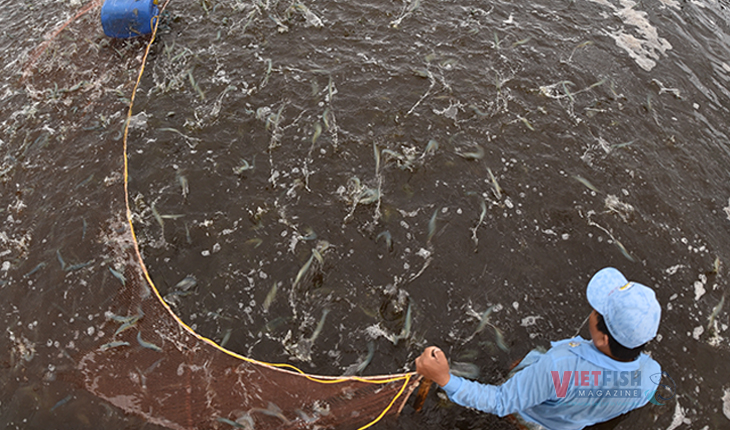 VIET NAM – Like many small-scale shrimp producers in this part of Vietnam, shrimp farmer Nguyen Manh Hung has been using an intensive method of farming focused on producing high yields. In these models, farmers clear as much of their property as possible to make way for earthen shrimp ponds, often lined with tarpaulin. “Back then we farmed shrimps in ponds, dug by hand and then machines when we got money,” Hung remembered. “You had to … fell trees to make the ponds: one big main pond, one pond for processing, and three smaller ponds on the side.” But with no trees to hold nutrients in the soil or keep the salty water table down, Hung’s farm was completely exposed to the elements. As well as drought, a series of devastating floods in 2002, 2008, and 2016 ripped more sediment from the banks of his ponds, and his land eventually became so badly degraded that he could no longer use it. After years of borrowing money, failed harvests, and the loss of his entire farm, the family was over $1 million in debt to the bank, he said. READ MORE Bangladesh needs mangroves and embankments, say locals and experts 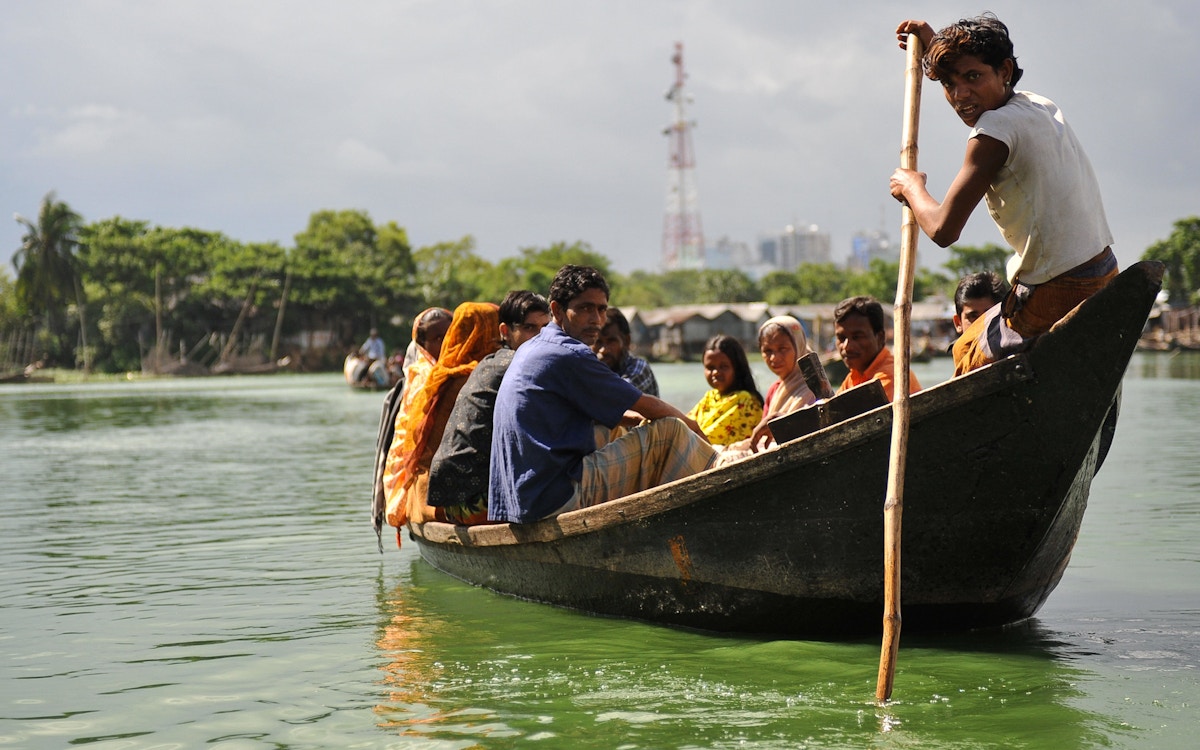 BANGLADESH – Notobor Malo plants mangroves next to his home every year to halt erosion by the rising sea. Some saplings die, but some survive to protect his riverside home in Mathurapur, a village in the Satkhira district in southwestern Bangladesh. Close to where the Arpangachhia River flows into the Bay of Bengal, saving Malo’s home is becoming more difficult as tides get higher due to the impacts of climate change. Still, he keeps trying. The world’s largest mangrove forest, the Sundarbans, is on the bank of another nearby river, the Malancha, a tributary of the Ganga. It costs Malo nothing to pick saplings there. The government has pursued a different strategy. Thirteen coastal districts of Bangladesh have 5,810 kilometres of earthen embankments that were constructed in the 1960s as part of the coastal embankment project (CEP), which morphed into the coastal embankment improvement project (CEIP). But cracks in the embankments are a constant problem. Worse, embankments can collapse when a big cyclone hits. READ MORE OCEANA Climate change killed 40 million Australian mangroves in 2015. Here’s why they’ll probably never grow back 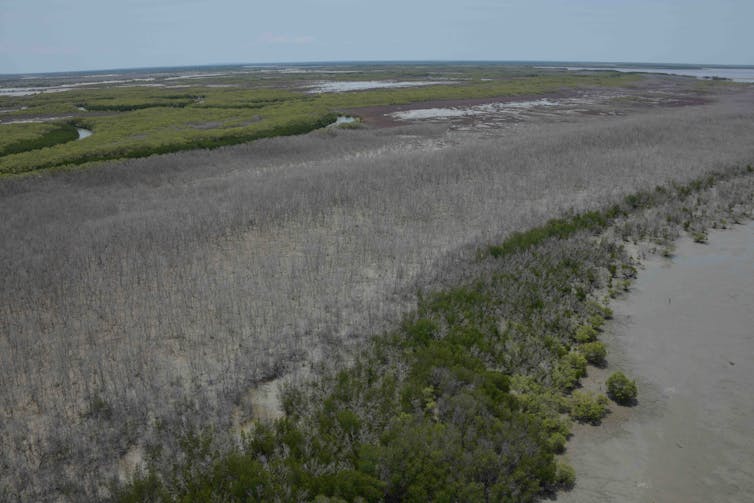 AUSTRALIA – In the summer of 2015-2016, some 40 million mangroves shrivelled up and died across the wild Gulf of Carpentaria in northern Australia, after extremely dry weather from a severe El Niño event saw coastal water plunge 40 centimetres. The low water level lasted about six months, and the mangroves died of thirst. Seven years later, they have yet to recover. My new research, published today, is the first to realise the full scale of this catastrophe, and understand why it occurred. This event, I discovered, is the world’s worst incidence of climate-related mangrove tree deaths in recorded history. Over 76 square kilometres of mangroves were killed, releasing nearly one million tonnes of carbon into the atmosphere. But this event, while unprecedented in scale, is not unique. My research also discovered evidence of another mass die-back of mangroves in the region in 1982 – the same year the Great Barrier Reef suffered its first mass bleaching event. READ MORE Pease consider donating to MAP to keep it going. *Articles in this newsletter may mention practices being used and/or show exagerated results being claimed without proof. Stories are presented here in effort to show mangrove related activity around the world and do not necessarily reflect Mangrove Action Project’s views or mangrove restoration best-practices. | ACTION ALERTS Do not sacrifice Congo’s rainforests to the oil industry! TAKE ACTION Please see the survey questionnaire we at MAP put together to discover where the shrimp industry is still having major adverse effects on mangroves and local communities. Stop the Dredging – 6.7 million cubic meters of sand from the Addu atoll basin will destroy nature, biodiversity and the natural defences and resilience of this UNESCO Biosphere Reserve. SIGN THE PETITION Keep fossil fuels out of Bangladesh for the health and wellbeing of the local communities, the beautiful regional beaches and forests, the Bangladeshi economy, and our shared climate. SIGN PETITION Stop this total madness Stop the biggest heated oil pipeline in the world — right through the heart of Africa! Like this newsletter? Pease consider donating to MAP to keep it going. Giving could never be easier MAP Website en Español ARTWORK SUBMISSIONS DEADLINE EXTENDED AUGUST 31st 13 Year old Linda Li “Mangrove Adventure” from Kid Dream Art School
Video: Mangroves for the Future WANT TO GET INVOLVED?
Like this newsletter? Pease consider donating to MAP to keep it going. Giving could never be easier
Interested in connecting or working with MAP? Check out our opportunities here MANGROVE ISSUES Want to learn more about mangroves? What is CBEMR? Download MAP’s 2 page CBEMR Information Sheet containing links to all MAP’s CBEMR resources – CLICK HERE View MAP’s uploaded Videos at Question Your Shrimp Consumer/Markets Campaign! Mangroves: Guidebook to Malaysia – Click Here SHARE MAP’S VISION Our short documentary, Reducing the Risk of Disaster through Nature-Based Solutions : Mangroves NASA Study Maps the Roots of Global Mangrove Loss Marvellous Mangroves Curriculum The Marvellous Mangroves Curriculum begins with a simple philosophy – getting future generations to not only learn about, but understand the importance of mangrove forests. VISIT Marvellous Mangroves Curriculum in Bangladesh – WATCH VIDEO
Like this newsletter? Pease consider donating to MAP to keep it going. Giving could never be easier
“Question Your Shrimp” Campaign Question Your Shrimp – is it really sustainable? Sign the Petition Note to Our Readers: We strive to keep active links in our newsletter. However, due to circumstances beyond our control, occasionally links to stories may become broken. If you find a link to a story is not functioning, please cut and paste the headline into your browser search bar. In most cases you should be able to locate the original story. Not yet a MAP News subscriber?
|
Mangrove Action Project Click here to view past newsletters
| |



